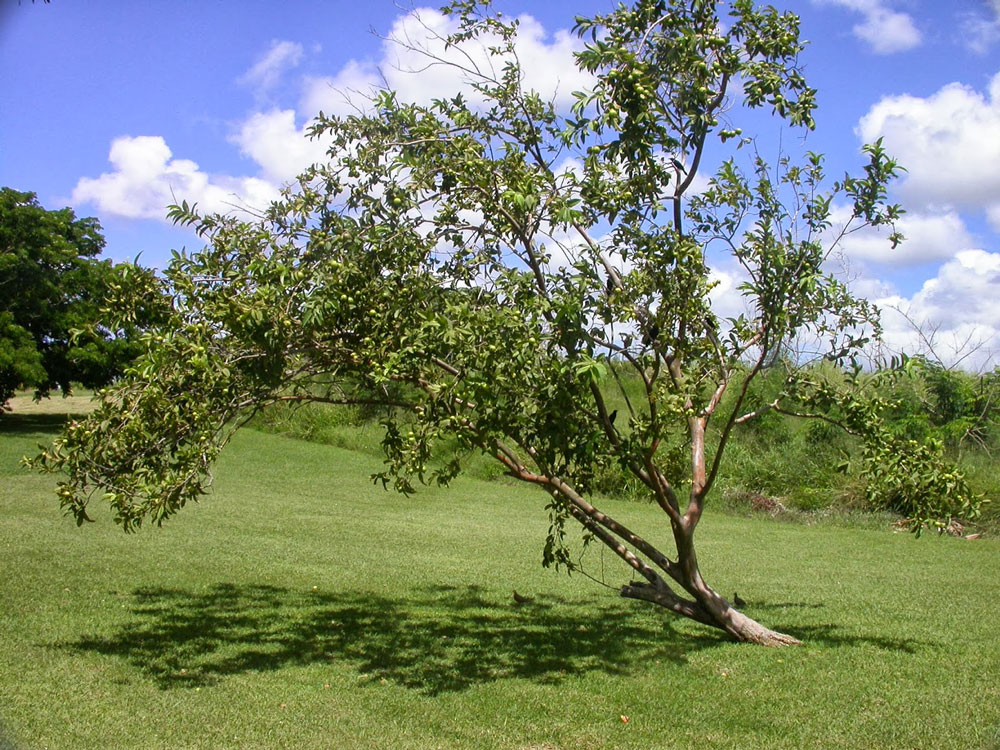Peru - Guava Tree

Psidium guajava
Summary
Scientific Classification
Kingdom: Plantae
Division: Angiosperm
Class: Dicotyledonae
Order: Myrtales
Family: Myrtaceae
Genus: Psidium
Species: P.guajava
Scientific Name: Psidium guajava L.
Common Names:
English: Guajava, Guava, Common guava.
Hindi: Amrood.
Kannada: Peru, Pearaley.
Marathi: Peru, Jamba, Perunjaams.
Description:
- Habit & Habitat: A Small tree with bark white, thin peeling off young branches 4-angled. Psidium guajava is a large dicotyledonous shrub, or small evergreen tree, generally 3-10 m high, many branches.Agricultural areas, forest edges, natural forests, riparian zones (banks of watercourses), ruderal/disturbed, scrub/shrublands in higher rainfall areas.
- Distribution: Australia, New Zealand, tropical and temperate Asia, tropical and southern Africa and many oceanic islands with warm climates.
- Morphology:
Leaf: opposite, simple; stipules absent, petiole short, 3-10 mm long; blade oblong to elliptic, 5-15 x 4-6 cm, apex obtuse to bluntly acuminate, base rounded to subcuneate, margins entire, somewhat thick and leathery, dull grey to yellow-green above, slightly downy below, veins prominent, gland dotted.
Inflorescence: axillary, 1- to 3-flowered, pedicles about 2 cm long, bracts 2, linear.
Flower: hermaphroditic, solitary or 2-4 together in leaf axils. Calyx splitting irregularly into 2-4 lobes, whitish and sparsely hairy within. Each flower has four or five green sepals (6-15 mm long) that are fused together at the base. Four or five white petals.
Androecium: Stamens many, free, inserted on the calyx-limb.
Gynoecium: Ovary inferior, multicellular, ovules many, stigma capitate.
Fruit: A fleshy berry, many seeded.
Flowering season: May –June.
Fruiting season: winter season.
Seeds: numerous, cream to brown, kidney-shaped or flattened seeds. - Propagation: Seed propagation can also be a way for propagation but it is a slow process. Cutting and grafting the stem are ideal methods for propagation of plant.
- Important:
Cultivated for its edible fruits from which jam, jellies etc. are prepared. The roots, bark, leaves and immature fruits, because of their astringency, are commonly employed to halt gastroenteritis, diarrhea and dysentery, throughout the tropics. Its wood can be used to make poles, fenceposts and tool handles, in handicrafts and for charcoal and firewood. - Location: Botanical Garden.
 Trees of GSS Project supported by Makerspace Belgaum Website concept and designe by
Trees of GSS Project supported by Makerspace Belgaum Website concept and designe by